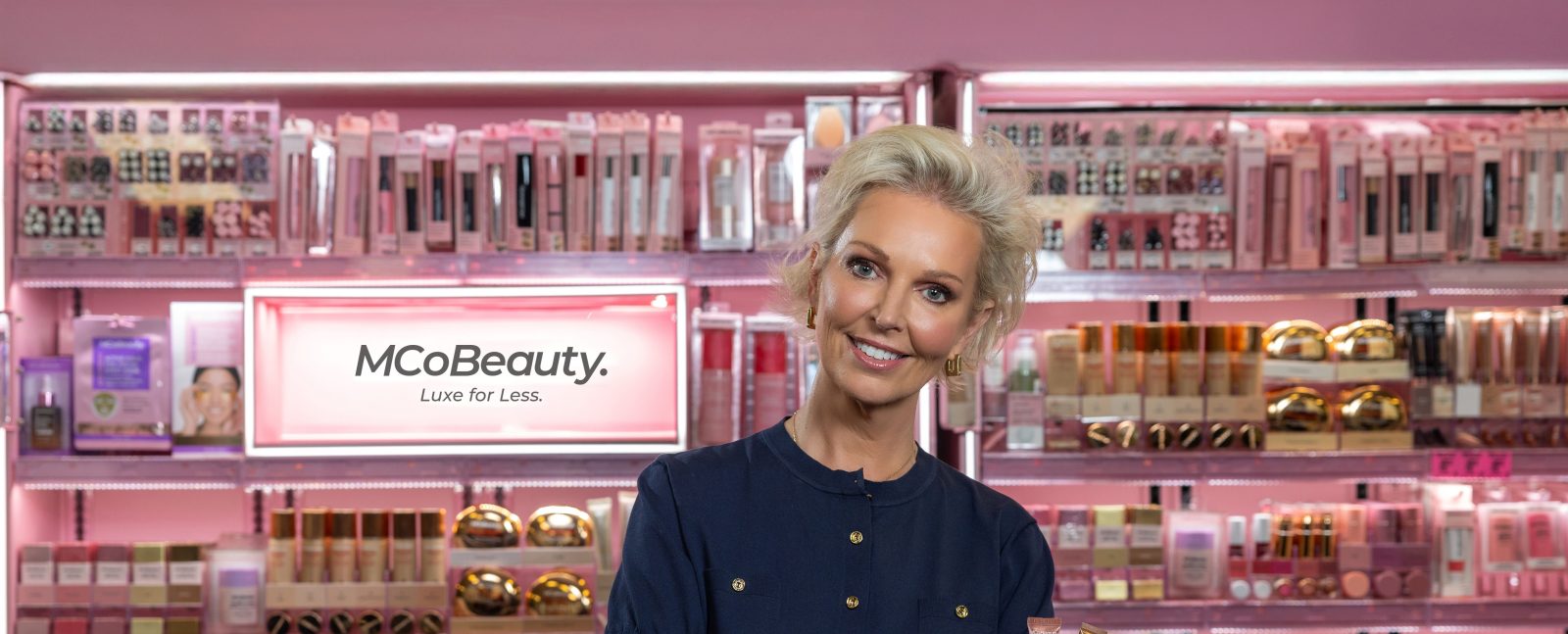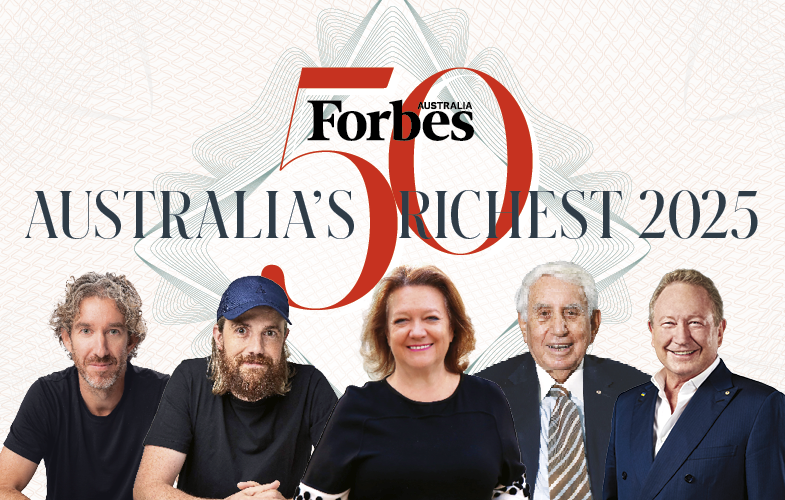Shelley Sullivan built MCoBeauty into a billion-dollar company in five years before selling her final stake in January. She recounts the 30-year journey behind the ‘overnight sensation’.
This story was featured in Issue 16 of Forbes Australia. Tap here to secure your copy.

Sometimes it’s hard for Shelley Sullivan to look women in the eye and tell them they can do what she’s done. Her mind goes back to those months flying the world, pregnant way beyond the usually allowable limits, ringing the hospital to make sure it had an ADSL internet connection because she had to sign off on something for David Jones before the birth.
“After the birth, that afternoon, I’m like, ‘Quick, I need to get back on and do a markdown.’ I was always on. To this day, I’m on. I keep saying I’m going to switch off, but I haven’t really.”
Sullivan’s fight-or-flight neurons are still firing from the seven-days-a-week, every-waking-moment demands of the business she stepped away from in January.
She wants to encourage women in her new role at LA-based talent factory Creative Artists Agency; wants to give them hope that they can emulate her success with MCoBeauty. “But I can’t lie. It’s hard. I can’t sit here and go; here’s the magic bullet for you to go off and make half a billion dollars.
“It’s hard work,” the 51-year-old tells Forbes Australia, as yachts sail past, metres from her [rented] lounge room at Point Piper on Sydney Harbour. “It’s surrounding yourself with the right people. It’s picking people that want to do the right thing by you. It’s being a leader. It’s being a mentor.” It’s going back to work three days after her two daughters were born.
Maybe Sullivan will never switch off. Perhaps she’s been running at a different tempo since the day she was born.
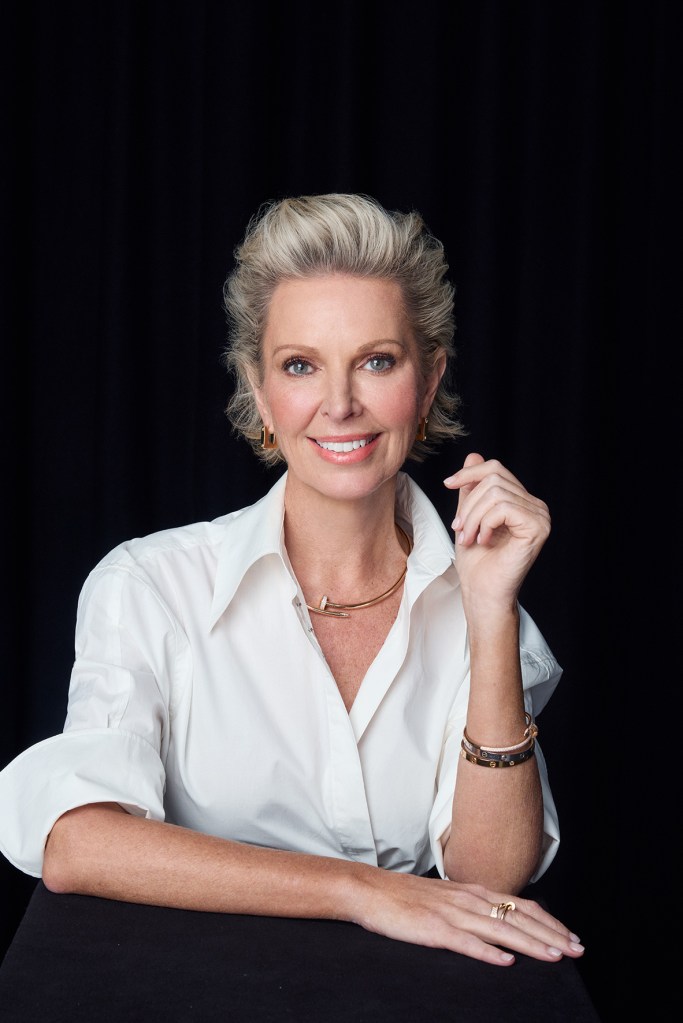
Old head on high heels
Shelley Williams was not like other kids, says her mother, Kerrie Martin. “I was a single parent, so I’d take her everywhere. She was just an inspiration to everyone. To some degree, she was a normal girl, but there was something different about her from the word go.
“She had her first high heels at four. When she was about 10 or 11, I asked her what she wanted for Christmas, and she wanted a notepad, a briefcase and a calculator so she could write down her ideas. I said, ‘What are your ideas?’ She said, ‘I don’t know, I haven’t had them yet.’
“She was very popular at school. She had a lot of friends, a lot of them that she still has now.”
One of those friends from St Clare’s College, Waverley, in Sydney’s east, Jane Sonego, recalls Sullivan as wise beyond her years, so they gave her an old-person type nickname, “Joyce”. “Even back at 13, when we were worried about what shoes to wear, she was thinking about businesses and coming up with ideas. In textiles and design or anything, she’d be thinking, ‘This could be done better’.”
Sullivan’s first business, at 16, was organising kids’ parties – doing invitations, catering, and music. She employed her friends, including Sonego: “She was an old head on young shoulders.”
By the time she left school the business had morphed into adult parties and events. She started modelling competitions with names like “Miss Bondi” and “East Coast Beach Girl”, where the winner got a modelling contract with a high-end agency.
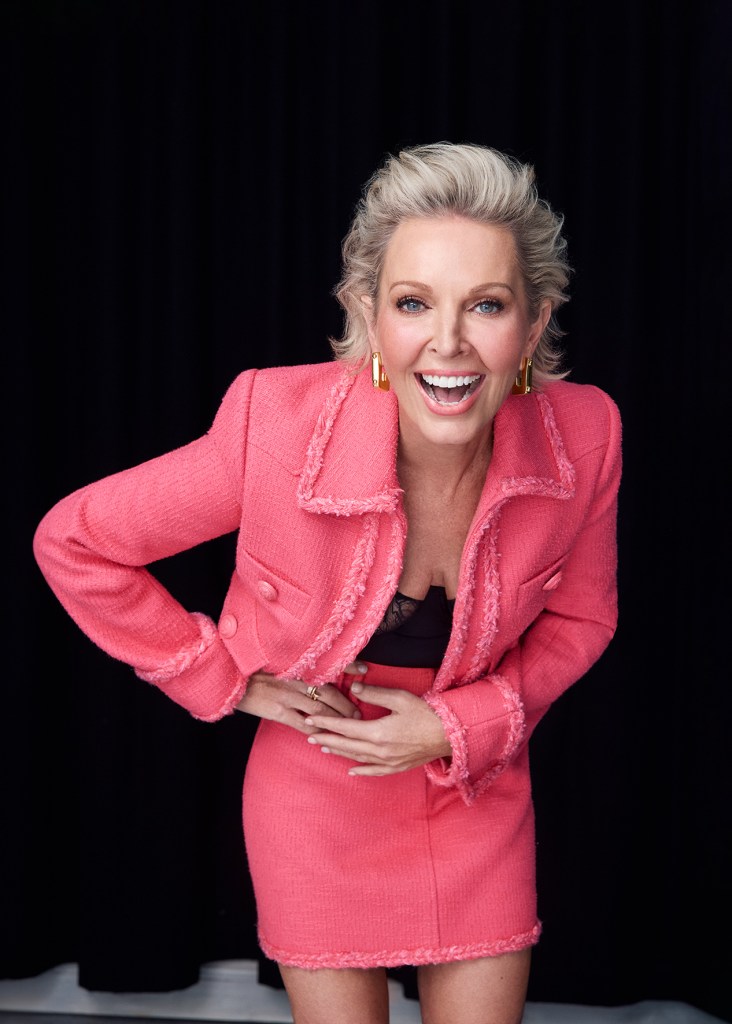
In 1993, aged 20, while still running her business, she started as a receptionist for Gordon Charles’ Platform modelling agency. He remembers her as “a bright young kid with lots of energy”. So much so that after just 10 months on the job, she thought she could do it better.
When she told her mother she was going to start an agency, Kerrie saw it as the culmination of the journey that began with the briefcase under the Christmas tree. “I thought, ‘Oh, my God. Here we go.’ And I thought, ‘You know what? Let’s back her and see what she can do.’”
Kerrie gave her every cent she had – $20,000. “I told her, ‘Get in there and work because we got it on the line now.’ She worked seven days a week. We both did.” Kerrie did the books and the back-end while Shelley worked on the people and the ideas.
“I started with one model who was this tall,” says Sullivan, motioning her shoulder height, about 150 cm. “Then I got on the phone and started speaking to magazines. One thing led to another, and I went from one talent to 1,800 talent. Not only did I have Shelley’s Model Management, I had Lollipop’s Children’s Model Management and Commercial Faces.”
It became the biggest agency in the country, according to Sullivan, but despite the apparent success, after six years, she couldn’t see a way forward. “All these kids wanted was money. They’d finish the job at lunchtime and ring me by two o’clock, ‘How can I get paid?’ Managing talent and cashflow on a small margin was a constant battle.”
Madam Lash
Shannan Whitney, who would later co-found BresicWhitney real estate agents, was Williams’
flatmate in Coogee and Paddington and best friend through the late 90s. He called her Joyce, too – he still does. He noticed how she was a maternal figure for her models. “Joyce had a big influence on them and she was always there to help them. She’s a bit like your mum and a bit like your grandma.”
He’d remember her coming home one day saying she was going to start a candle business. “She started creating her own ideas about contemporary candles and selling them at Paddington Markets. That didn’t last very long.”
Sullivan says it was around this time she noticed models coming in with burns on their eyelids from using hair dryers with eyelash curlers. “I said, ‘Well, hang on. Why don’t I create a heated eyelash curler?”
She found a manufacturer in Korea and sent drawings, enduring multiple stilted phone calls back and forth over a year before she had a product in her hand. “I sold it into David Jones for 20 bucks. I thought it was the best thing ever. I ordered 5,000 units. Then I got a telephone call from [beauty retailer] Space NK in London and a store called Colette in Paris. I didn’t even know who Colette was. They said, ‘We’ve seen you in Vogue.’ Next minute, I got a couple-of-million-buck orders out of them.
“It sold a shit ton, and all the department stores were saying, ‘What have you got next?’ That was when I saw a can of Rexona on my desk. My models were coming in with orange, feral tans and blotchy hands. And I said, ‘Surely if you can put Rexona in a can, you can put tan in a can.’”
Shelley Sullivan
She drove the 43 km from her Woollahra office in Sydney’s better-healed east to Kings Park in the outer west, to a company called Multi-Fill. “They said, ‘Oh no, we just make WD-40 and Rexona.’ I said, ‘No you don’t.’” She sat with the company’s chemists and worked out how to get the key tanning ingredient, DHA, and make it spray from an aerosol can.
Shannan Whitney recalls Sullivan coming home and testing a can on him. He’d never heard of such a thing because there hadn’t been one. “I remember her saying to me she thought this was going to be big – I thought it was a pretty silly idea. But she stuck to it.”
They were all enjoying the twenty-something life – nightclubs, parties and friends – but he’d see her packing herself off to trade shows and factories. “She’s a very curious person. But it didn’t dominate her life.”
The product hit the market, and the response was instantaneous. Sullivan would remember the Myer department store ringing her saying they were out of stock after she’d just delivered 400 the day before. She drove in with a carload. “I was ripping open the boxes, and people were mugging me for the stuff,” she told columnist Jo Cassamento.

Sullivan registered the name ModelCo in 2002. Soon after, she got an offer to sell the modelling agencies for $1 million to Ben McPherson, brother of supermodel Elle, whose Artist & Entertainment Group was rolling up management assets ahead of a float. She sold and put the money into the nascent cosmestics business, ModelCo.
The Bunnings beauty dept
High school friend Jane Sonego recalls being at Sullivan’s place for dinner. “She was still being Joyce, cooking for everyone. She was washing up and observed the detergent coming through the foam scrubber’s handle. ‘Gee, that’d be good for a tanning applicator.’ I was just in awe of how she always was one step ahead of everyone else,” says Sonego.
Sullivan went to Bunnings, looked at all the different shapes such as dishwashing products and shoe-shine sponges came in, and designed what she called a Sun Sponge. It was released internationally and sold okay, she says, but it had leakage and tooling problems, so she went back to the drawing board. Ideas were never the problem, but bringing them to market was hard.
“The stuff I come up with, it’s insane. I don’t know why. I just think of things. I always think, ‘Oh my God! This is going to be ground-breakingly new.’ Back then, I didn’t know all the problems.
“When I’m thinking, ‘Okay, what’s gonna be the next greatest thing?’ I never look in beauty. I go to Bunnings, I’ll go to a fruit shop, I’ll go to Woolworths, and I’ll walk down an aisle. I think, ‘How can I change that delivery system into beauty?’”
She came up with a cotton bud with liquid already inside for cleaning off makeup; lipstick with a light and mirror built in for a quick nightclub application. She usually had a year or two of clear air before the majors copied her. Business was booming. Once she’d got into Collette in Paris, distributors found her, wanting to take her products all over the globe.
She was, by now, married to her boyfriend since high school, Damian Barrett. In 2005, they had their first child, Lucy, and their second, Emily, in 2007.
“When I had the girls, I went back to work three days later. I’ve never spent one day pretty much at home with the kids. That doesn’t sound too good in today’s society, but I couldn’t have done what I have done today if it wasn’t for Mum and the girls’ dad, Damian, who is fantastic.”
While Shannan Whitney was growing BresicWhitney full of stress and doubts, he always noticed how Sullivan seemed – on the outside at least – to breeze along. When he told her he’d signed up for an MBA, she laughed at him. “That’s the stupidest idea I’ve ever heard.” It was years before he realised they were both doing an MBA every day. But her “amazing self-belief” never veered into arrogance, Whitney says. “She was always aware of her emotions, friendships, and relationships with others. And I’m sure that has been central to her success.”
ModelCo was expanding rapidly at the same time BresicWhitney was taking off. “She came to me and said, ‘Whits, it would be very, very helpful if you could lend me $250,000.’ And I remember her husband, Damian, saying, ‘You’re just going to give that to her? You’re not going to take any security? You’re not going to sign an agreement?’” But there was never any question in Whitney’s mind. “That was quite a lot of money for both of us back then. But I knew she wouldn’t ask me if she didn’t genuinely need it.” He got it back in a few months.
Posh shop
In 2007, ModelCo was in 27 countries and had a counter in Henri Bendel in New York, where Victoria Beckham was a customer. When Beckham was photographed applying a hot pink ModelCo lippy at an LA Galaxy football match, it just added to the brand’s cache.
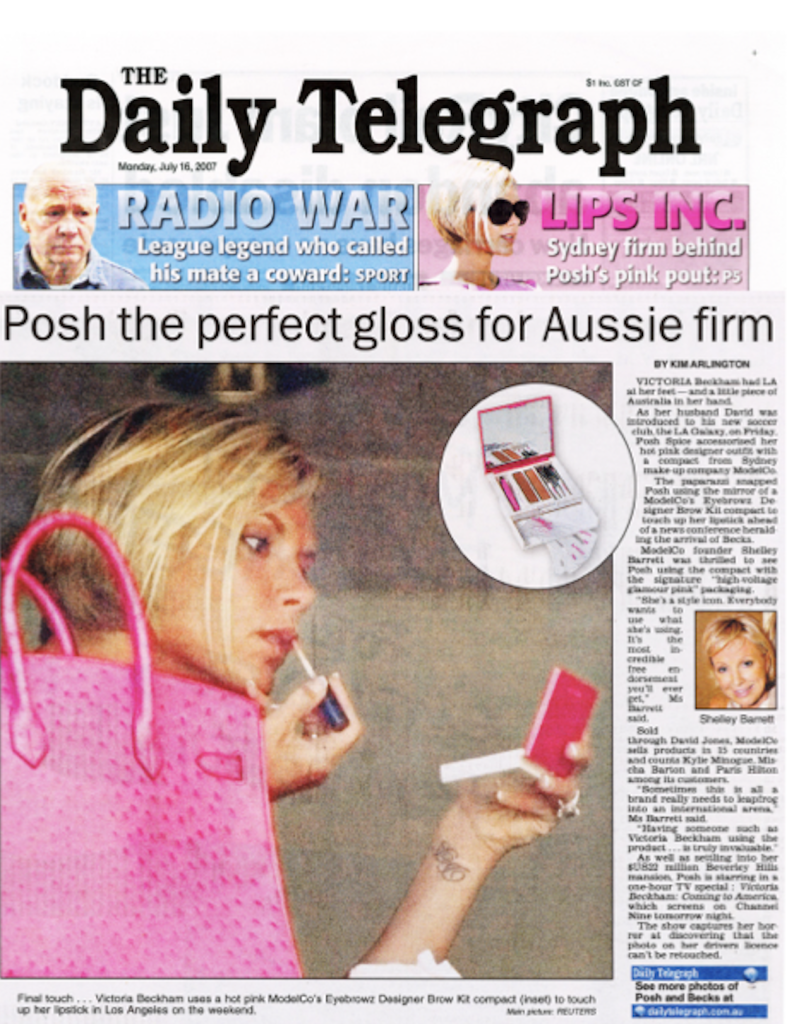
“I had Estée Lauder trying to buy me; private equity made offers. I was doing $10 million annual revenue and thought it was fabulous. I was approached not because of my revenue but because of my ability to think outside the square and create magic marketing moments.”
Then the GFC hit. Numerous distributors went broke owing her for large shipments. And she still owed the manufacturers. “I had to pedal back to Australia to rewind and reinvent myself,” she tells Forbes Australia.
The business was on the brink as sales went from 80% overseas to 80% Australian.
Accountant Anthony Sullivan was central to getting the business back on an even keel. “He was fantastic at helping me refinance,” she says of the man who, in 2016, would become her second husband. The trauma got her questioning the ModelCo model – but the answer was still years away.
Creative director Al Weekes will never forget the first time he met Sullivan in 2002. There was no, “Hello, pleased to meet you.” Her very first words were, “We’re going to paint Paris pink.” And, with the launch into Colette, they did. Sullivan and Weekes continued to work together, and in 2018, they won a pitch to license designer Karl Lagerfeld’s name on 52 products.
Weekes recalls Sullivan being fearless in seeking what she needed from the Lagerfeld team. “If it meant Shelley asking Karl to work harder, she would do that,” says Weekes. “They would go, ‘Wow, you can’t ask Karl that.’” She was never disrespectful, says Weekes, “It would be more about driving it as hard as we can. He [Lagerfeld] was writing down the names of lipsticks and eyeshadows, but she would say, ‘We wanna see what’s in Karl’s head. I want to see a drawing.’”
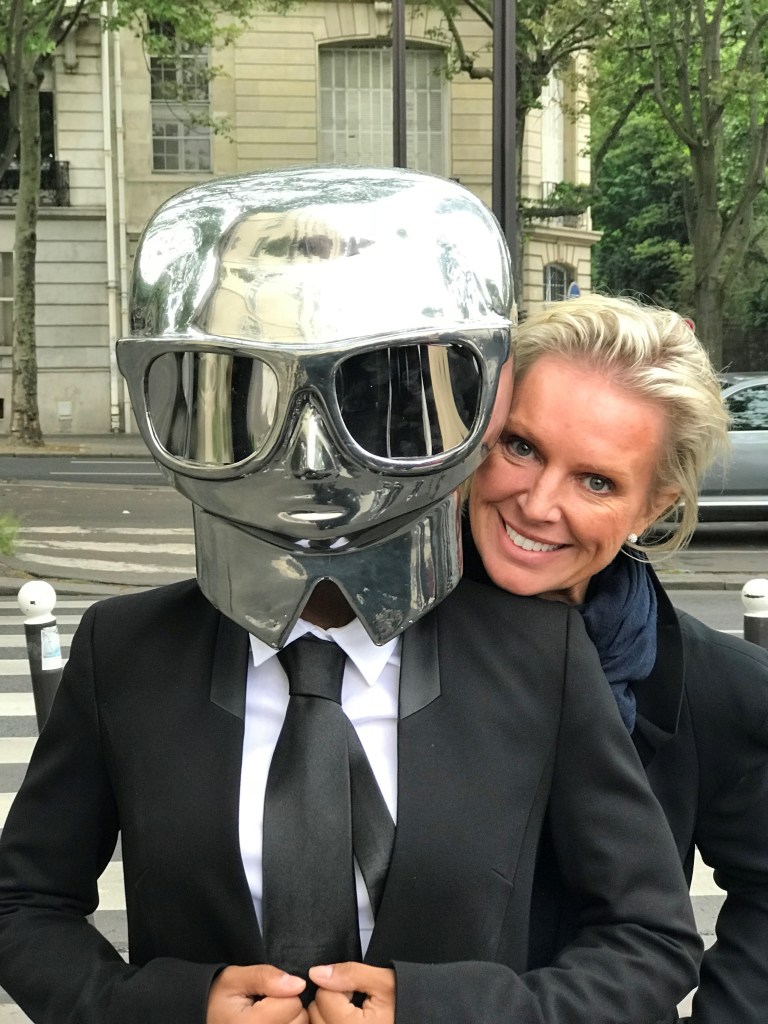
Sullivan ended up resurrecting one of her favourite products, the lipstick with an inbuilt light, and designing Karl Lagerfeld’s head on top of the tube. Then, they created an event where a platoon of Lagerfeld’s “Beauty Butlers” marched iconic Paris locations. “It’s about thinking outside the square – we sold gazillions,” says Sullivan.
Sullivan had just done the Lagerfeld launch at the Nordstrom luxury department store in Los Angeles and was walking down Melrose Place, seemingly at a pinnacle, but still wondering what was next. “Something in me knew that premium was done,” she says. “There were 450 brands in premium. There was Kylie Jenner, Kim Kardashian, there was Beyonce.”
She was sick of the effort of putting counters in department stores, needing to sell eight products an hour to break even – only to see the giants steal the ideas.
She walked past a shopfront done up in baby pink. And a feeling hit her … She was going to go mass market.
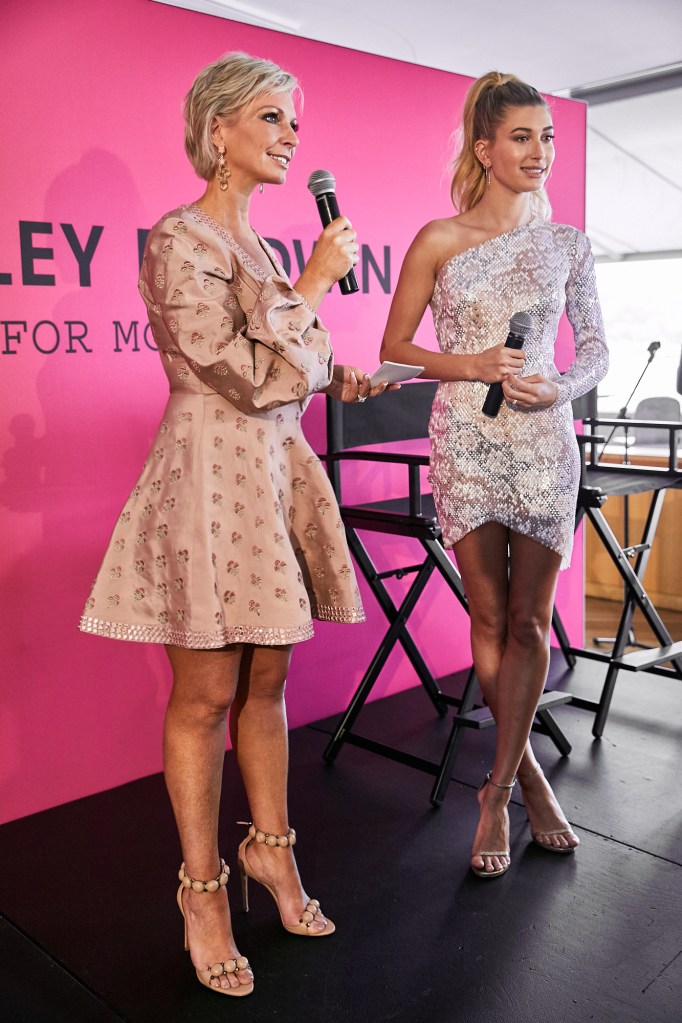
“Everyone used to steal my ideas,” she explains. “So I decided to go the opposite. Instead of going innovative, I decided to go ‘Masstige’, giving people luxury for less. It was a whole different strategy.”
She’d now be competing against the likes of L’Oreal and Maybelline. “If you went to a store, everything was boring. It was black and blue and gold. I could visualise a sea of pink.”
On her first day back on deck in Sydney, she went to see her graphic designer: “Open up a screen. Do a logo, make it italic, make it baby pink.” She rang one of her manufacturers. “All this stuff you’ve got, we’re going to throw it out. Can you quickly mock me up this new one?”
Within three days, she had samples on her desk and was arranging to meet with Woolworths to sell this new brand – MCoBeauty. The product inside was virtually the same as the old premium ModelCo formulations, but she knew the cost would come down if she could sell enough. Her own margin would shrink. “I’m not ordering 3,000 units; I’m ordering 300,000 units. The product is good quality. It’s already cool. It’s got the cachet of ModelCo because it’s worked with Hailey Bieber and Rosie [Huntington-Whiteley] and Dannii [Minogue].” It would be a quarter the price.
“The machine started going, and I had the social media following personally.”
That daily MBA was coming good.
“I did a 20-year degree in what not to do in business. Everyone thinks you’re sitting there putting lip gloss on all day. I’m deep in the business. I’m in retail, I’m in manufacturing, I’m in finance, I’m in legal.”
Shelley Sullivan

Al Weekes told her she was making a mistake. “I’m an old-fashioned brand guy. I was like, what are you doing? You’ve built this brand over 20 years. Now, you’re creating this diffusion brand. But she was absolutely right. Her intuition is second to none. She’s got this innate strategic mind that observes and marinates, then she just delivers.”
Sincerest form of flattery
MCoBeauty grew to have more than 1,000 products and variants. It took the best of what was out there, scooping up design and product ideas – what’s called “duping” always cognisant of not crossing the line into trademark infringement – though not always successful at that.
One of her marketing coups was getting comedian Celeste Barber to compare half of her face under $350 of Tom Ford makeup to an $84 MCo face.
It went viral, and all contributed to MCo’s rapid rise – as did the COVID-19 pandemic, in which high-end beauty stores closed while Woolworths and BigW flourished.
Sullivan cops criticism for the duping. But this is more from the industry than the public. At a recent Forbes Australia soiree, a woman came up to her and told her she was the “Robin Hood of beauty”.
In its first year, MCoBeauty had sales of $10 million. She sold half the company to Dennis Bastas’s DBG group in 2022, when sales were $30 million.
Bastas’s VidaCorp, helped grow the brand to $262 million in revenue in 2024 with a strong presence in Chemist Warehouse, and taking it to New Zealand and the US. Sullivan sold the remaining 50% of the company to Bastas in January at a valuation of more than $1 billion.
A different measure of success might be her daughters Emily, 17, and Lucy, 19. They are both studying business at university. Emily rang home recently to tell her mum that she [Sullivan] was on their uni curriculum alongside renowned investor Warren Buffett. And last year, Lucy put together a vision board of where she saw her life going. A picture of her mother was right in the middle. “I want to try and follow her footsteps,” Lucy tells Forbes Australia. “I put up all of her hard work and achievements and then wrote down ways I’m going to achieve that.”
Sullivan glowed with pride – and a hint of astonishment – as she had related the story. “She just wants to one-up mum.”
Timeline
- 1973: Born Shelley Williams
- 1994: Founds modelling agencies
- 2001: Invents heated eyelash curler
- 2002: Launches ModelCo, sells agencies
- 2005: Daughter Lucy Barrett born
- 2007: Daughter Emily Barrett born
- 2016: Marries accountant Anthony Sullivan
- 2016: Teams up with Hailey Baldwin
- 2018: Licensing deal with Karl Lagerfeld
- 2020: Founds MCoBeauty
- 2022: Sells half of MCoBeauty to Dennis Bastas’s DBG Health
- 2024: Separates from Anthony Sullivan
- 2025: Sells remaining 50% of MCoBeauty – valued at $1b – to Bastas. ModelCo winds up
Dupe in a teacup
When Australian family business Chemcorp saw that MCoBeauty had an eyelash colour, 2000 Hour, with similar packaging to its own 1000HOUR, it sued, alleging it was an “unlawful copy, as opposed to a dupe”.
Chemcorp was founded on that product 30 years earlier, and it has remained its biggest seller. The decision to sue, “was never driven by a fear of competition,” Chemcorp said in a statement, “but was about maintaining the standards of the industry as a whole.”
Chemcorp CEO Jodie Phillips declined to comment on the case but said that while the MCo copy did hurt sales a little, 1000HOUR had maintained its market lead.
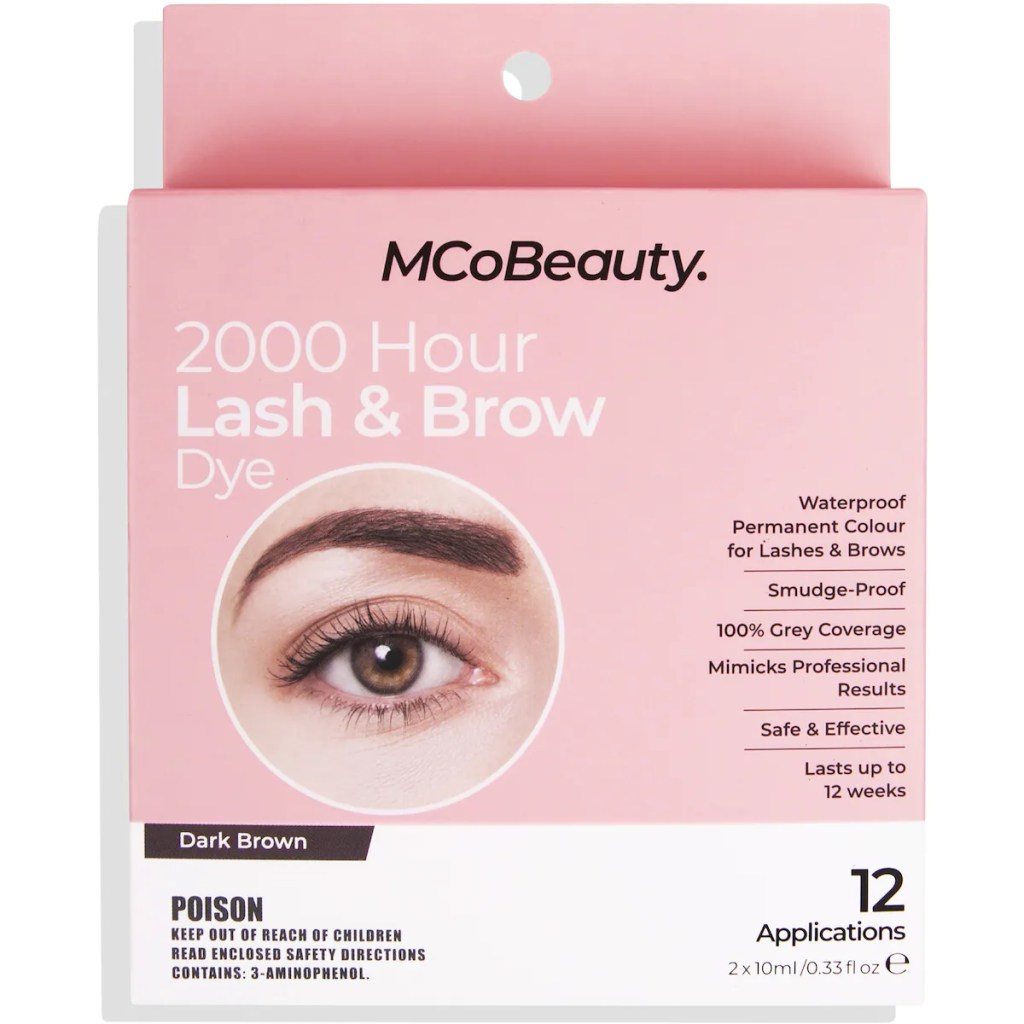
Sullivan says it was all a mistake on her part; that she chose the name in haste. “There was no product registration for that name. It was our fault, so I quickly changed it. And the product never sold, so we dumped it.”
Through it all, she remains unrepentant.
“Duping has been done for years. For some reason, someone’s just got onto, ‘Oh my God, an Australian brand’s duping.’ I spent the first 10 years of my career with everyone duping me.”
Shelley Sullivan
She never sued. “People are buying into the brand’s quality and what the brand stands for. So, I have no problem with anyone taking any of my products as inspiration. So how’s this? I had Celeste Barber, and she was fabulous with me. She’s gone and duped me, and I think that’s great.”
Sullivan says Barber has copied her number-one bestseller, XtendLash Mascara. “She loved it so much, she duped it. I’m happy to help her.”
Beauty industry analyst and data scientist Lily Twelftree of Barefaced says the beauty industry seems to be judged to a different standard than the fashion industry. Whereas people might look unfavourably at fashion dupes, her sentiment analysis shows that the trend has been towards buyers increasingly seeing beauty dupes as giving power to consumers.
“MCo, in my mind, is as close to being counterfeits as they can without being literal counterfeits – but it’s the messaging piece … in the way they say, ‘The consumer feels they have a right to be able to engage in online trends at an affordable price point, whereas fast fashion now has a strong negative connotation.”
Forbes Women is mobilising a network of female business owners, entrepreneurs and changemakers who support and empower each other. Become a member here.

